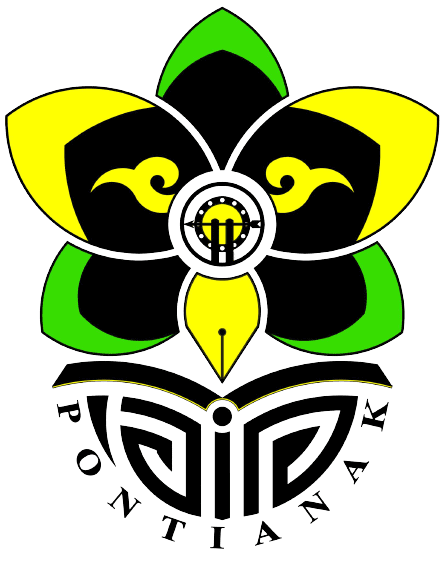Author Guidelines
GENERAL GUIDELINES
1. Articles must be formatted according to the structure of scientific journal writing.
2. Use Mendeley with the American Psychological Association 6th Edition (APA Style) + manually include page numbers.
3. The article must be an original work (no plagiarism) and has not been published in any print/online journal, proven by the Plagiarism Check results.
4. During the review and editing process, or after the article is published, it is not allowed to be submitted to another journal.
5. Submit articles via the Open Journal Systems (OJS) at http://e-journal.iainptk.ac.id/index.php/j-md/about/submissions.
6. Articles should be typed in Garamond font (12 pt) with 1.5 line spacing in Microsoft Word format, with an A4 page size (210 x 297 mm). The length of the article should be between 4000-6000 words.
7. Articles should be written in Indonesian or English, following proper grammar rules. Generally, English articles should use the past tense.
SPECIFIC GUIDELINES
1. Submitted articles can be the result of conceptual (literature) research and empirical research on Da'wah Management Studies, specifically including: Da'wah Strategies, Da'wah Administration, Hajj and Umrah Management, ZISWAF Management, Mosque Management, Event Organizer Management, and Islamic Institutional Management.
2. Conceptual research articles should follow this structure: Introduction, Content or Discussion, Conclusion, and References.
3. Empirical research articles must be written using the IMRAD structure: Introduction, Methods, Results, and Discussion.
4. Since the journal employs a "Blind Review" system, authors are expected not to include names, institutional names and addresses, or email addresses on the article cover page.
5. The author's name, institution name, and email address should be provided during registration on the OJS.
6. Authors must include a means of communication by providing an active mobile phone number.
7. Title:
a) The title should succinctly and clearly encapsulate the content of the discussion. Creative and attractive titles are encouraged (maximum 12 words).
b) The title should be written in both English and Indonesian.
c) The title should be typed in bold and capital letters.
8. Abstract: Presented concisely and clearly, containing: Background, problem, objectives, methods/approaches, and findings. The abstract should be written in one paragraph, single-spaced, with a maximum length of 250 words.
Keywords: Contain the basic words in the research, which can be taken from research variables, subject characteristics, and reference theories (maximum of four words or combinations of words).
9. Introduction: Contains the background of the problem, research objectives, benefits, and theoretical review.
10. Content or Discussion: Contains explanations of the main points and research results in relation to previous research, analyzed critically and linked to the latest relevant literature.
11. Results: Contains data, assumption test results, and hypothesis test results presented sequentially or integrated and critically analyzed.
12. Conclusion: Contains the summary of research objectives. It should be written in concise, clear, and dense sentences based on results and discussion, in paragraph form (not numeric).
13. Foreign and regional words not yet standardized in the Indonesian Dictionary (KBBI) should be italicized; Arabic text should be written in Traditional Arabic font, size 14 pt, while transliterated Arabic words should use Times New Roman in italics.
14. The journal only accepts article submissions through online submissions (OJS).
15. References: Contains sources listed alphabetically. A minimum of 15 references is required, with 40% being scientific journals.
16. Citations and bibliography style must be managed automatically using a Reference Manager, specifically Mendeley, in APA 6th Edition style.
**Examples of References**
1. From Textbooks:
- Patmawati and Elmansyah. (2019). Sejarah dan Eksistensi Tasawuf di Kalimantan Barat, Pontianak: IAIN Pontianak Press.
- Elmansyah. (2014). Paradigma Peradaban Tasawuf: Sebuah Pemaparan Awal, Pontianak: STAIN Pontianak Press.
2. From Translated Books:
- Johnson, D.W. & Johnson, F.P. (2012). Dinamika Kelompok: Teori dan Keterampilan (Theresia S, Trans.), Jakarta: Indeks Publishing.
3. From Theses/Dissertations:
- Anwar, M.K. (2016). “Pengembangan Buku Kerja Eksplorasi Karir pada SMP Ali Maksum Bantul”, (Unpublished Master’s Thesis), Universitas Negeri Yogyakarta, Yogyakarta, Indonesia.
4. From Online Journals:
- Hanggara, G. S., Andrianie, S., ‘Ariyanto, R. D. (2018). Pengembangan Aplikasi Assessment Menggunakan Media Short Message Service’, Jurnal Kajian Bimbingan dan Konseling, 3 (4), 146–153.
5. From Print Journals:
- Shelly, D. R. (2010). “Periodic, chaotic, and doubled earthquake recurrence intervals on the deep San Andreas fault”, Science, 328 (5984), 1385-1388.
6. From Proceedings:
- Wilkinson, R. 1999. Sociology as a marketing feast. In M. Collis, L. Munro, & S. Russell (Eds.), Sociology for the New Millennium. Paper presented at The Australian Sociological Association, Monash University, Melbourne, 7-10 December (pp. 281-289). Churchill: Celts.
7. From the Internet/Website:
- Master Card and Crescent Rating, “Global Muslim Travel Index 2016”, https://www.crescentrating.com/reports/mastercard-crescentrating-global-muslim-travelindex-gmti-2016.html, accessed on February 17, 2020.











